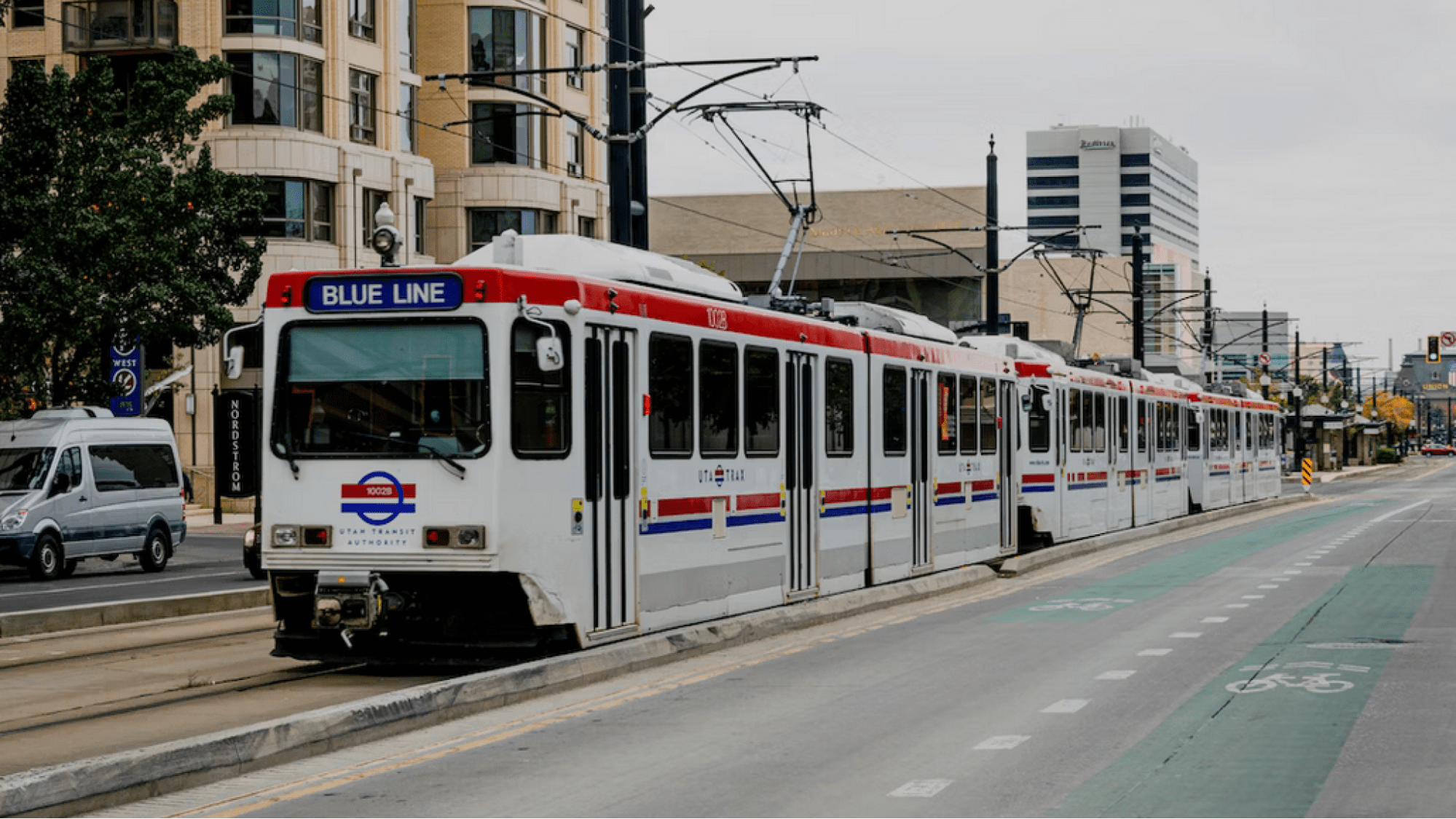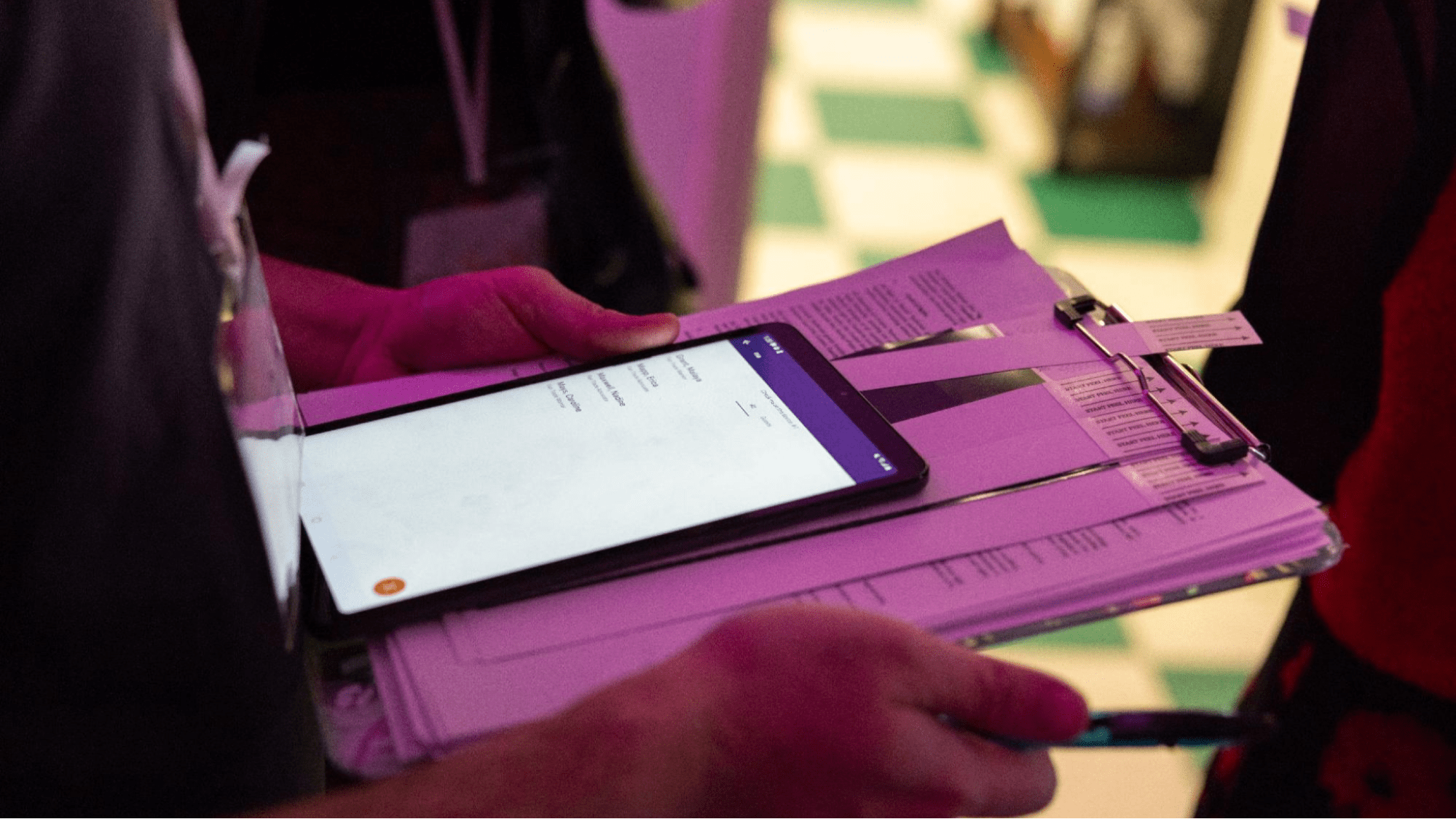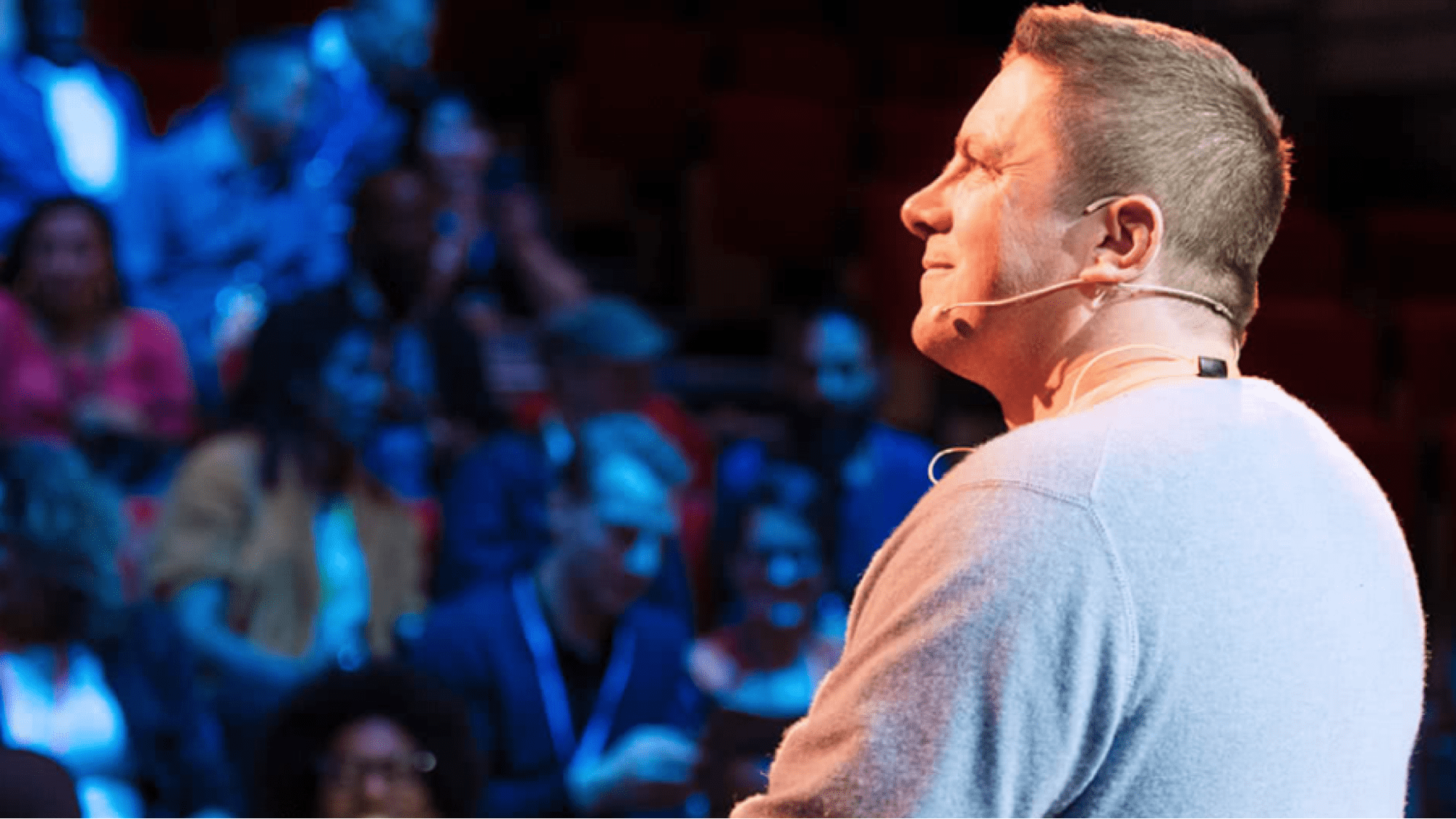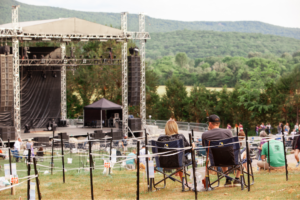Imagine orchestrating perfect events, from start to finish, leaving your attendees astounded.
Well, it’s possible. With our conference planning checklist and customizable template — handling intricate event logistics becomes an effortless task. After more than 15 years of working with events, we want to share our process with you.
In this article, we’ll guide you through all the crucial steps needed. From selecting the ideal venue and curating compelling content to managing attendees, we’ve got you covered. And we’ll even help you wrap up with confidence.
Let’s get started.
Table of Contents
The foundation: clear goals and a strong team
Planning accommodations and transportation
Tackling event registration and ticketing
Program development and content curation
Audio-visual equipment and technical support
Collaborate with sponsors and partners
Prepare attendee packets and conference materials
The event: daily execution and management
Post-conference evaluation and follow-up

The foundation: clear goals and a strong team
A successful conference begins with a solid foundation. The most important steps to achieve this are:
- Establishing clear objectives
- Defining your audience
- Crafting a realistic budget
- Setting the dates and managing your timelines
- Forming a skilled team
Following this path can ensure your event runs smoothly and makes an impact. Let’s take a closer look at each step.
1. Defining conference objectives
Are you aiming to educate, inspire, network, or launch a new initiative? Your goals for this event will steer every decision you make during the planning process. They need to be crystal clear.
For instance, you might be organizing a tech conference with the primary objective to educate attendees on the latest advancements in AI. Knowing your objective is educational might steer you away from sales pitches and more towards inviting industry experts as your speakers.
Your conference goals may also dictate the format of your event — including interactive sessions and Q&As may take precedence over flashy product presentations.
But to know what your speakers should cover and at what level, you need to know something about your audience.
2. Identifying your target audience
By understanding your target audience’s needs and preferences, you can tailor the conference content, format, and experience to their expectations.
Let’s say your target audience is primarily AI researchers and enthusiasts. Knowing this, you would choose in-depth technical sessions, demonstrations of cutting-edge technology, and opportunities to network with industry leaders, rather than an AI 101 session.
With clear objectives and a defined audience, you’re ready for the next vital phase.

3. Establishing a realistic budget
When you handle your event budgeting skillfully, your conference planning will run like a well oiled machine. Make sure you budget your available financial resources such as:
- Registration fees
- Sponsorships
- Potential revenue streams
Then create a comprehensive budget that includes all anticipated costs, for example:
- Venue rental
- Catering
- Marketing
- Speaker fees
- Logistics
Taking the time to plan out all these costs in advance will help you avoid any nasty surprises down the line, and ensure that you’re setting your prices at the right level.
4. Setting the dates and managing timelines
Choosing the right dates can significantly impact your conference’s success. When making this decision, keep these in mind:
- Avoid event clashes: Ensure your conference isn’t scheduled simultaneously with other industry events.
- Dodge holidays: Avoid popular holiday periods when potential attendees are likely to be unavailable.
- Consider blackout dates: Be mindful of blackout dates — specific periods when travel and accommodation prices soar. Neglecting these can lead to a spike in expenses for attendees, which may discourage their participation.
- Understand audience preferences: Reflect on your target audience’s availability and preferences. Avoid peak vacation times or periods when they may have conflicting commitments.
Once you have successfully determined your conference dates, construct a detailed timeline that identifies all key milestones and deadlines. After all, effective planning pivots on timeline management. Start from the event date and work backward, ensuring you have time to complete all tasks and activities on time.
This timeline will be your trusted guide through the planning process, keeping you on track and focused on your objectives. Using this conference planning checklist, you can set dates for each item and put each one in your calendar.
Now it’s time to assemble your all-star planning team.
5. Assembling a planning team and assigning roles
A successful conference requires a collaborative effort and team management. Building the right team is critical to the success of your conference, and choosing the right people requires careful consideration.
To create a smooth-functioning team, it’s crucial to assign clear roles and responsibilities.
Some team members might take on the task of venue research, burrowing into the details of location, capacity, and availability.
Others may work in areas like:
- Speaker management
- Marketing
- Logistics
- Registration
With your dream team assembled and roles defined, you have built a powerful engine to drive your event towards success.
Next, let’s look at securing the perfect venue.

Venue selection and logistics
Choosing the right venue is crucial for a memorable conference experience. You’ll need to consider the space itself, but also its location and logistical details.
1. Identify suitable venues
When choosing a venue, there are a few things you should take into account:
- Expected audience size
- Planned conference activities
- Special needs or requirements
For example — you may need multiple rooms for breakout sessions, a large auditorium for keynotes, or specific audiovisual (AV) equipment.
Use online directories, event planning platforms, and industry connections to create a list of potential venues fitting these needs.
2. Evaluating facilities, capacity, and accessibility
Once you have a list, it’s a good idea to visit potential venues, if possible. You’ll want to evaluate:
- Seating capacity
- Layout flexibility
- Available amenities (Wi-Fi, charging stations, on-site tech support, catering)
Also, check if the venue is accessible to attendees with restricted mobility and complies with relevant regulations.
3. Negotiate contracts and secure permits
Once you’ve found a suitable venue, you need to make sure they deliver what you need when you need it, and that you both have all the necessary permits. To avoid problems on the day, the best option is to sign a contract:
- Review all terms and conditions, such as rental costs, deposit requirements, cancellation policies, and additional fees
- Verify that the contract covers every aspect of your event
- Inquire about any required permits or licenses
Securing the right venue sets the stage for a successful conference. Always plan ahead to secure availability and allow ample time for logistical preparations.

Catering and refreshments
When it comes to planning a conference, catering and refreshments should be a top priority on your conference planning checklist. It’s a big deal, and it’s more than just fuel for the day. Coffee and lunch breaks at conferences are the best time for attendees to socialize and network, so make it easy for them to do so.
Selecting a catering service
First things first, you need a reliable caterer.
Some conference venues have their own catering services, so check whether they do, and if they don’t, do they have a list of preferred caterers?
If not, look for a team of professional event caterers close to the venue. You might want to pull on your network to get some local recommendations, or even ask the venue — it’s probably not their first rodeo.
Once you’ve picked your caterer, you’ll have to choose a menu.
Planning the menu
Once you’ve got your caterer, it’s time to talk about the menu. Consider the:
- Event’s theme
- Event’s duration
- When you’ll need refreshments.
Pop Up did an incredible job when choosing a unifying theme for their event All In Together Now – A 36 course Wu-Tang Clan inspired event. Every single dish followed the Wu-Tang theme and made the event highly original.
When planning the menu, don’t forget to account for dietary preferences. A great way to ensure this is to ask for dietary requirements during registration. You can do this by adding customized questions to your event registration process when using the Eventbrite platform.
Coordinating catering logistics
Next up is logistics (again).
Work with your caterer to pin down meal times and break times, and where you’ll have snack and beverage stations. The goal is to keep the refreshments flowing smoothly throughout the event and to create spaces where attendees can comfortably eat and drink whilst socializing.
A well-executed catering plan will keep attendees energized and satisfied throughout the event, and enable networking opportunities, creating an upbeat and amiable atmosphere.
Once you’ve got the food down, it’s time to research and book accommodations and transportation.

Planning accommodations and transportation
It’s important to consider the accommodations and transportation options available to your attendees. Here are some key points to consider:
Public transportation and parking
Evaluate the transportation options to the conference location and provide clear instructions to attendees on how to reach the venue.
Consider the proximity to airports, train stations, and major highways, as well as the availability of public transportation.
You’ll also need to figure out:
- Where will your attendees likely travel from?
- How accessible is your event for your attendees?
- Is there good public transportation?
- Is there enough parking?
Depending on where most attendees are staying, you might consider shuttle services to and from the venue.
Accommodation and lodging options for attendees
Scout out hotels near the venue and try to get a good deal on a block of rooms. If your event involves a large number of attendees, you may need to have several options. When choosing, consider how much your attendees are likely to be able to pay for accommodation.
There’s a big difference in organizing a conference for C-suite executives compared with new startups.
Make sure you share this information with attendees as early as possible, so they can plan accordingly.
Communicating transportation and accommodation information
Be proactive in giving attendees information about accommodations and transportation by sending reminders and updates as the conference approaches.
This process can be made easier if you use conference management software like Eventbrite, and you integrate it with email management tools like MailChimp. That way, you have all your attendees’ emails in one place and can easily create and send automated reminders at set time intervals, ensuring everyone receives the important information.
Remember, your job is to make the conference experience as seamless as possible for your attendees.
Pro tip: Include map links on your event website.

Tackling event registration and ticketing
The registration and ticketing process is the first significant interaction your attendees have with your conference.
To ensure it’s a positive experience, it’s crucial to focus on creating a smooth, user-friendly process.
In this section, we’ll discuss effective strategies, like online registration platforms and flexible ticketing options, that streamline this process and leave a lasting first impression.
Selecting a registration platform
A suitable registration platform simplifies your conference management process significantly. It provides:
- Online registration
- Easy ticketing
- Efficient attendee management
A user-friendly interface adds to the experience, saving you time and effort. The key lies in choosing a platform that aligns perfectly with your conference’s specific requirements.
Setting ticket pricing
The secret to setting the right ticket pricing lies in understanding your audience and the value of your event. The task at hand is simple: to price your conference in a way that maximizes both attendance and revenue.
Here’s a practical approach to refine your ticket pricing strategy to ensure your prices not only drive sales but also align with your conference’s objectives:
1. Review your budget and goals: Your ticket price needs to cover costs and align with your audience’s expectations.
2. Do your research: Understanding the ticket prices of similar events can offer a ballpark figure for your pricing. Look for similar events in your industry to compare.
3. Know your audience: Consider who your attendees will be — are they senior industry executives or junior staff? Non-profit or corporate? These factors can influence how much attendees are willing to pay.
4. Play around with ticket types: Consider early-bird discounts, VIP packages, or group rates.
5. Keep it clear: Your pricing structure should be easy to find and understand on your website and registration platform.
Want to explore how to set up an event and choose your ticket types and prices?
Start selling tickets with Eventbrite

Create a smooth registration process
Roll out the red carpet for your attendees with a seamless registration process:
1. Keep it short and sweet: Your registration form should be concise, asking for only the essential details.
2. Embrace social media: Give attendees a speedy registration process with social media logins. Eventbrite integrates with all popular platforms.
3. Stay in touch: Allow attendees to opt-in for event updates and notifications. It’s a great way to keep them in the loop.
Offering secure payment options
Smooth payments make happy attendees. Here’s how to offer a secure, user-friendly payment experience:
- Variety is key: Accept popular payment methods, including credit cards, debit cards, and digital wallets.
- Safety first: Secure encryption protocols are your best friend.
- Test, test, test: Regular checks of your payment process can catch any pesky glitches.
- Confirmation is satisfaction: Attendees should get clear confirmation and receipt notifications after registering and paying.
- Support: Make sure attendees can easily find contact information and support channels if they run into issues. A little help goes a long way!
Streamlining these processes will enhance the attendee experience, boost registrations, and facilitate seamless check-ins during the conference.
Pro Tip: Designate a dedicated team member or team to handle attendee inquiries and provide assistance throughout the registration process.

Program development and content curation
Delivering a truly memorable conference starts and ends with your program. It’s not just about providing a platform for ideas, but about crafting an experience that resonates and sticks with your audience.
To do this, develop a well curated program. Here’s how:
Determine conference themes and topics
Start by identifying the main themes and topics that align with the objectives of your conference.
That might include:
- Industry trends
- Key issues
- Audience interests
Understanding your main conference themes and topics matters when developing your program. It’s the heart of the conference.
You’ll want to conduct market research and engage with potential attendees to gather insights and understand their preferences. Download the Eventbrite Trends Report to learn more about current trends in the events industry.
The idea is to strike the perfect balance of:
- Seminars
- Panel discussions
- Interactive workshops
- Networking opportunities
You can also include:
- Keynote speakers
- Subject matter experts
- Industry leaders
- Engaging session formats
By finding that balance you’ll cater to a diverse range of interests and learning styles.
Eventbrite has an extensive list of conference themes to help you create a unique and unforgettable event.

Invite keynote speakers and panelists
The individuals you invite as keynote speakers and panelists can make or break your conference. So, how do you ensure you’re inviting the right people?
Keynote speakers should be selected for being renowned in their field and bringing a certain level of credibility to your conference. But it’s not just about reputation or expertise, your keynote speakers need to captivate your audience, leaving them inspired and eager for more.
Seek out those with compelling stories, unique insights, and a captivating presentation style.
Panelists need to be knowledgeable and capable of contributing to meaningful discussions, offering diverse perspectives on the panel topics.
Pro tip: Be upfront and clear about what you expect from them. Be sure to communicate:
- Time commitments
- Discussion topics
- Compensation and benefits
This transparency will help set the stage for a successful conference.
Design a diverse and engaging program schedule
Crafting a diverse and engaging program schedule is an art that strikes the right balance between learning and networking.
Not only does it cater to various interests and learning styles, but it also serves as the lifeblood of your conference, pumping energy and excitement throughout the event.
Structure the program in a way that allows for networking opportunities and informal interactions between attendees and speakers.
Consider allocating specific:
- Time slots for networking breaks
- Breakout sessions
- Panel discussions
- Keynote addresses
- Lunch sessions
- Evening receptions and social events to foster meaningful connections
Be mindful of the duration and timing of each session to avoid participant fatigue.
Leveraging technology and interactive tools
Utilize event apps or dedicated platforms that allow attendees to access the program schedule, session details, speaker profiles, and provide feedback in real-time.
Consider incorporating live polling, audience response systems, or interactive Q&A sessions to encourage active participation from attendees.
Technology will not only make the sessions more engaging but also provide valuable data and insights for post-conference evaluation.
Pro tip: Remember, technology isn’t just about engagement. It’s also a goldmine of data for post-conference evaluation, helping you measure success and plan future events.
Incorporating interactive sessions and networking opportunities
Enhance the conference experience by incorporating interactive A/V elements such as audience response systems or mobile apps that allow attendees to participate in real-time polls and discussions.
Utilizing interactive visual aids, such as touch-screens, or live demos makes sessions more engaging and helps attendees better understand and retain the information presented.
Once you’ve decided what you want, you need to procure it and make sure it’s working.

Audio-visual equipment and technical support
From sound systems to visual presentations, incorporating the right A/V equipment and ensuring technical support are essential for a seamless and engaging event.
Assess the requirements of each session and determine the necessary A/V equipment. Factor in:
- The size of the venue
- The number of attendees
- The nature of the presentations
Ensure that the A/V equipment you choose is of high quality and can effectively cater to the needs of each session.
Visit the venue in advance and conduct rehearsals the day before to understand the layout and determine the optimal placement of the equipment for optimal visibility and sound quality.
Ensuring access to technical support
Work closely with the venue or a professional A/V company to ensure that technical support personnel are available on-site throughout the event and have a point of contact with your team.
Prior to the conference, communicate with the technical support team to provide them with detailed information about the event, including session schedules, A/V requirements, and contact information.
Pro tip: Regardless of preparations, technical issues can still arise. Have backup plans in place to quickly address any disruptions or equipment failures.

Marketing and promotion
A comprehensive marketing strategy will help you reach your target audience, build excitement, and drive registration. Here are the basic steps you need to know to market your event.
Start by defining your conference’s unique selling points (USPs) and value proposition.
- What sets you apart from others in the industry?
- Why should attendees attend your event?
Then, identify your target market and create buyer personas to tailor your marketing efforts to reach and engage with your desired audience.
Now you’re ready to start putting your event out there.
Creating a compelling conference website and registration process
Before you start marketing your event you need to have somewhere to direct your potential attendees to, where they can find all the relevant information about your conference.
Design a user-friendly conference website that provides all the necessary information about the event.
Streamline the registration process by using a user-friendly event planning app like Eventbrite.
Utilizing social media, email marketing, and PR tactics from Eventbrite
Harness the power of social media platforms to promote your conference and engage with your target audience. Here are some of the steps you can take to create an effective social media buzz:
- Create social media accounts dedicated to the event and regularly post updates, speaker highlights, session teasers, and behind-the-scenes content.
- Write a press release and distribute it to relevant media outlets, industry influencers, and bloggers.
- Encourage attendees to share their excitement and use event-specific hashtags to amplify your reach.
- Implement an email marketing campaign to reach out to your database of potential attendees.
Pro Tip: Personalize emails to increase engagement and conversion rates.
Want to know more about marketing your event through Social media? Check our social media guide.

Collaborate with sponsors and partners
Establishing partnerships with sponsors and industry organizations can enhance your conference’s reach and credibility. You can do this in different ways:
- Sponsorships: Collaborate with sponsors to cross-promote the event through their networks, newsletters, and social media channels.
- Exhibitors: Consider offering exhibitor spaces for companies or organizations relevant to your conference themes so they can showcase their products. It’s a good way to bring value to the overall conference experience.
Prepare attendee packets and conference materials
Providing well-organized and informative attendee packets and conference materials is essential for ensuring that your attendees have a smooth and enjoyable experience at your conference.
They also leave a lasting impression on the participants.
1. Creating a conference guide or program
Develop a comprehensive conference guide or program that outlines the basics:
- Schedule
- Session details
- Speaker bios
Ensure that the guide is well-designed and visually appealing. You can make this as simple or intricate as you like, as long as it’s easy to follow.
Providing a map or floor plan of the venue on your program is very helpful for the attendees to navigate the event space efficiently.
2. Preparing name badges and conference swag
Produce professional and personalized name badges for each attendee. Include their name and affiliation.
Provide conference swag or promotional items that attendees can take home as a memento of the event. Examples include branded merchandise such as pens, notepads, tote bags, USB drives, or water bottles. Choose items that are practical and aligned with the conference theme.
3. Assembling necessary materials
Gather all the necessary materials including:
- Printed copies of presentation slides
- Handouts
- Surveys or feedback forms
- Evaluation sheets
Organize the materials in a logical and easy-to-access manner in a folder or bag to keep them together.
If possible, provide digital copies of the materials in addition to the printed versions, allowing attendees to access the information on their devices.
Pro Tip: Don’t forget to allocate space in the attendee packets to showcase information about your sponsors.
Some sponsors or partners may even provide promotional materials or special offers to add to participant packets.

The event: daily execution and management
The day has arrived! You have planned and reviewed all the details to make this a successful event. But there is a little more work to do.
These are the final steps you need to take on the day itself.
1. Ensuring smooth registration and check-in processes
Ensure that the registration area is well-staffed with friendly and knowledgeable personnel who can assist attendees to collect their badges and conference materials as well as with any inquiries or issues.
To streamline the registration you can use an event app like Eventbrite, and include mobile check-in options to expedite the process and minimize queues.
2. Managing on-site logistics and troubleshooting
To manage logistics on the day, share a detailed schedule and timeline for each day’s events and designate a point person to oversee these elements during the event.
- Conduct a final equipment check to ensure proper functioning and set up
- Coordinate with the catering service to ensure confirm the serving time
- Work closely with the technical support team to troubleshoot any issues
- Meet with the speakers to ensure everyone is aware of the flow of the conference.
Assign other staff members to specific areas or responsibilities, such as session room monitors, information desks, or networking facilitators and establish a communication system between you — an app or a walkie talkie.
4. Collecting feedback and monitoring attendee experience
If you want to collect feedback on the day, you’ll have to implement a system for gathering — feedback forms, surveys, or digital feedback tools.
Assign staff members to collect and compile feedback throughout the event, and analyze the feedback in real-time to identify any areas for improvement or immediate action.
Pro tip: Regularly check social media platforms and conference-specific hashtags to monitor attendee sentiment and address any concerns or questions that may arise online.
5. Capturing memorable moments
Designate a photographer or videographer to capture key moments of the conference, such as keynote speeches, panel discussions, networking sessions, and social events.
These visuals can be used for promotional purposes or future recaps of the event. Encourage attendees to share their experiences and photos on social media using event-specific hashtags.
Having all these images can feed your social media and blog content needs for years to come!
Post-conference evaluation and follow-up
Once the conference is finished, it is time to gather and analyze the data and create your event report to identify areas of strength and areas for improvement.
1. Gathering feedback
Send out post-conference surveys or feedback forms to gather input from attendees.
Reach out to speakers and sponsors too to gather their feedback on their experience and the value they derived from the conference.
2. Analyzing data and measuring success against objectives
Review your registration data to understand attendee demographics, including job titles, industries, and geographic locations, and evaluate the number of registrations, attendance rates, and any trends or patterns in registration behavior.
Compare this data to your initial projections and assess if your marketing strategies were successful in attracting the desired audience.
3. Assess engagement and participation:
To identify opportunities for improvement, it is essential to review data related to networking activities at your conference.
This includes analyzing attendee interactions, business card exchanges, and engagement in social events.
By assessing the level of networking and relationship-building that took place, you can pinpoint areas where enhancements can be made to foster even more meaningful connections among attendees.
4. Evaluate sponsor and exhibitor outcomes
To enhance the experience of sponsors and exhibitors at your conferences and ensure continued support, it’s crucial to assess their satisfaction levels.
Collect feedback on various aspects, such as return on investment, lead generation, brand exposure, and overall experience.
This valuable feedback will enable you to make improvements and attract ongoing support from sponsors and exhibitors in future events.
5. Measure against objectives and KPIs
In order to evaluate the success of your conference and measure its effectiveness, compare the data collected with your initial objectives and key performance indicators (KPIs).
Assess the extent to which you have achieved your intended outcomes and determine how well the conference aligns with its goals.
To gauge the conference’s performance, identify specific metrics to measure success, such as attendee satisfaction ratings, the number of business connections made, sales generated, or partnerships established. Analyze these metrics comprehensively to gain insights into the overall success of your conference.

6. Reviewing lessons learned and planning — your event report
Create a thorough event report that encompasses the data analysis, key findings, and actionable recommendations for future conferences.
Utilize data visualization tools like charts, graphs, and dashboards to present your findings in a visually engaging and easily understandable format.
Ensure to share this comprehensive report with your team, stakeholders, and sponsors, providing them with valuable insights and information derived from the data analysis.
7. Sending thank-you notes and post-conference communications
After the conference, express gratitude to all contributors and maintain ongoing communication with attendees, speakers, sponsors, and partners.
Sending thank-you notes and engaging in post-conference communications strengthens relationships, gathers feedback, and leaves a positive impression. Remember to extend gratitude to the speakers, sponsors, and partners.
Keep the lines of communication open with attendees, speakers, sponsors, and partners beyond the conference. You could, for example, send periodic newsletters or updates to keep them informed about upcoming events, and share highlights from the conference through social media.

Maximize Success with Our Comprehensive Conference Planning Checklist
With this checklist guide and your dedication, you can organize remarkable conferences that make a lasting impact. From setting objectives to flawless execution, you have the tools to unlock a world of possibilities. And if you liked using a template for your conference planning, check out some of our other event planning checklists and templates.






